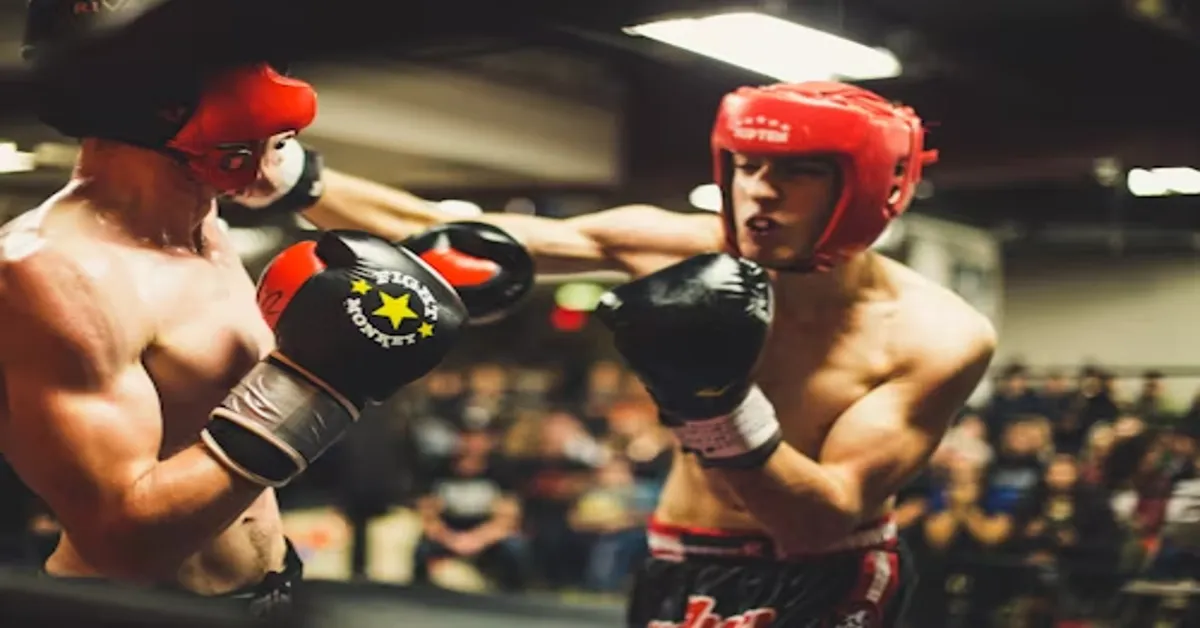In the world of martial arts, countless systems offer unique methods of striking, grappling, and self-defense. Among these, Panantukan, also known as Filipino Boxing or “Dirty Boxing,” stands out as one of the most practical, effective, and brutal close-combat systems. Often overshadowed by more commercialized martial arts like Muay Thai or Brazilian Jiu-Jitsu, Panantukan has quietly built a strong following among self-defense enthusiasts, military personnel, and real-world fighters.
In recent years, Panantukan DVDs have emerged as an essential medium for practitioners to access authentic instruction, especially when quality in-person training is hard to come by. These DVDs offer structured lessons, tactical breakdowns, and fight-proven drills that allow learners to absorb techniques at their own pace, no matter where they live.
This article aims to provide a comprehensive understanding of Panantukan as a martial art, the value of training through instructional DVDs, what to expect from high-quality Panantukan DVDs, and how to integrate this learning method into a well-rounded martial arts education. Whether you’re a complete beginner or an advanced practitioner seeking deeper insights, this guide will equip you with the knowledge to embark on your Panantukan journey with clarity and purpose.
What is Panantukan?
Panantukan is often referred to as the “Boxing” component of Filipino Martial Arts (FMA), though it is far removed from traditional Western boxing in both execution and philosophy. It is a striking system that emphasizes fluid, close-range movement, angling, and targeted attacks using the hands, elbows, shoulders, head, and even low-line kicks. While Panantukan may not be as mainstream as other combat sports, its techniques are incredibly effective for street fighting, military applications, and real-life confrontations.
Rooted in the same combat culture that birthed Arnis, Kali, and Eskrima, Panantukan was designed for efficiency. It borrows from empty-hand interpretations of weapon-based movements. This makes it particularly unique because its body mechanics, timing, and entries often simulate weapon use—meaning every move is explosive, compact, and intentional.
Panantukan is commonly trained in combination with other FMA systems and is often taught alongside Dumog (grappling) and Sikaran (kicking). Its techniques focus on destruction (e.g., breaking the opponent’s structure or limb), redirection, and counteroffensive strategies. It utilizes “limb destructions,” which involve targeting the opponent’s limbs to disable them and limit their ability to continue fighting. These attacks are often executed through punches to biceps, forearms, or joints—methods rarely taught in conventional martial arts.
The Need for Panantukan DVDs: Bridging the Gap Between Authenticity and Accessibility
One of the greatest challenges faced by students interested in Panantukan is access to qualified instructors. While FMA has grown in popularity globally, not every city or country has a dedicated Panantukan coach. This is where instructional DVDs—or digital video formats more broadly—become invaluable.
Panantukan DVDs allow learners to bypass geographical limitations and receive instruction from reputable experts who have studied the system for decades. These DVDs are often produced by world-class martial artists with deep roots in the Filipino Martial Arts community. Their content is typically broken down into digestible segments, allowing students to pause, rewind, and practice techniques as many times as needed.
In contrast to live classes where you may only get one chance to see a technique, DVDs provide a permanent reference you can revisit any time. For solo practitioners or small groups training in garages, backyards, or home dojos, this format is a lifeline. It promotes continuous learning, even in the absence of a formal training environment.
Additionally, these DVDs usually come with thematic structures: beginner guides, limb destructions, clinch work, trapping drills, fight strategy, and scenario-based self-defense. Such detailed curriculum planning is often absent in generalized martial arts classes that only touch upon Panantukan occasionally.
What You’ll Learn from a High-Quality Panantukan DVD
1. Basic Foundation and Fighting Stance
A good Panantukan DVD always starts by introducing the fighting stance. This stance is typically angled, mobile, and designed for both offense and defense. Unlike traditional boxing, Panantukan incorporates more tools (elbows, shoulders, forearms), and the stance reflects that multi-functional approach. You’ll learn how to keep weight distributed for balance and quick directional changes, and how to manage distance with subtle footwork.
2. Weapon-to-Empty-Hand Translation
Since Panantukan evolved from weapon-based systems, many techniques simulate stick or blade movements. The DVD will likely explain how angles of attack from weapons training apply to empty-hand tactics. You’ll be taught how to “cut” with your hands, redirect with the forearms, and mirror blade footwork even in hand-to-hand scenarios. This principle improves reaction time and enhances the combat mindset.
3. Destructions and Interceptions
A hallmark of Panantukan is the use of limb destructions. These aren’t fancy tricks—they’re battle-tested movements intended to damage the attacker’s offensive tools. You might strike a punching arm’s bicep with your elbow or smash a kicking shin with your knee. DVDs often break down these techniques with slow-motion analysis and live-speed demonstrations. They also teach timing, angle, and distancing critical for success.
4. Trapping and Hand Fighting
Panantukan utilizes advanced hand-fighting methods to control the opponent’s limbs, create openings, and shut down attacks. You’ll learn how to trap an arm, pull it offline, and deliver a counterstrike. This is often done fluidly in combination with punches and follow-ups, mimicking street-level entanglements. The DVDs often integrate concepts from Wing Chun, JKD, or Kali to enrich the trapping arsenal.
5. Clinch and Close-Quarters Techniques
In real fights, especially self-defense scenarios, opponents often close the distance quickly. Panantukan prepares you for this by teaching clinch tactics, dirty boxing strikes, headbutts, and elbow work. These techniques work in confined environments where traditional martial arts lose functionality. DVDs often dedicate entire sections to this range, emphasizing balance, control, and rapid disengagement.
6. Footwork and Mobility
Mobility is vital in Panantukan. The art doesn’t favor stationary trading of punches. Instead, it relies on strategic footwork to reposition, flank, or retreat. You’ll learn how to pivot, side-step, and angle out while keeping pressure on the opponent. Quality DVDs include drills for solo shadowboxing or partner-based movement sequences.
7. Scenario-Based Training
Advanced DVDs often incorporate real-life scenarios: multiple attackers, environmental hazards, or defending against armed strikes. These modules push learners to think critically and apply techniques in chaotic, unpredictable contexts. They help bridge the gap between training and reality, making you a more adaptable martial artist.
Choosing the Right Panantukan DVD: What to Look For
Instructor Credibility
Always research the background of the instructor. Ideally, they should have lineage under a recognized FMA system and years of experience teaching Panantukan specifically. Authenticity matters when learning an art that’s not widely commercialized.
Progressive Curriculum
The best DVDs provide structured learning paths. Look for series that begin with fundamentals and progress into intermediate and advanced topics. This ensures you’re not thrown into complex drills without a proper foundation.
Production Quality
Clear visuals, proper lighting, multiple camera angles, and slow-motion breakdowns can dramatically improve your learning experience. Poor production can leave you confused or misinterpret technique mechanics.
Supplemental Materials
Some DVD sets include PDFs, training guides, or online support forums. These resources can enhance your understanding and provide additional perspectives on the material covered.
Solo and Partner Drills
Unless you always have a training partner, look for DVDs that include solo drills for shadowboxing, footwork, and reflex training. These allow you to train consistently, even when alone.
Integrating Panantukan DVD Training into Your Routine
If you’re serious about progressing in Panantukan through DVD learning, discipline and consistency are critical. Set a structured weekly schedule, alternating between drilling, technique review, and sparring or scenario practice (if a partner is available). Use a training log to track your improvements, record questions, or areas needing clarification.
Mirror training is another useful tool—by practicing in front of a mirror, you can self-correct posture, angles, and alignment. Filming yourself and comparing it with the DVD demonstration is equally powerful.
Pair Panantukan DVDs with other self-defense materials, like stick or knife training, to gain a complete view of Filipino Martial Arts. Over time, you’ll notice patterns repeating, which builds muscle memory and tactical fluidity.
When possible, attend seminars or workshops hosted by the DVD instructors. These live sessions allow you to refine techniques, ask questions, and connect with the wider Panantukan community.
The Benefits of Training with Panantukan DVDs
- Flexibility: Learn on your own time, at your own pace, without commuting to a training center.
- Affordability: A full DVD set often costs less than a month of classes and provides lifetime value.
- Depth of Knowledge: DVDs frequently dive deeper into Panantukan concepts than mainstream classes that skim the surface.
- Replay Value: Revisit complex techniques until you master every detail—something impossible in a live class.
- Privacy: For those uncomfortable in group settings, DVDs offer a private, stress-free learning environment.
Common Misconceptions About Panantukan DVDs
Some critics claim DVDs can’t replace live instruction. While it’s true that feedback from a coach is invaluable, DVDs are not a replacement—they are a supplement. For many, they’re the only way to access high-level instruction. When combined with live sparring or peer training, DVDs become a powerful tool for progression.
Others believe that Panantukan is too “dirty” or unrealistic. On the contrary, its very nature—being designed for real-world violence—is what makes it highly effective. Panantukan’s practicality lies in its rawness and adaptability, not in adhering to sport rules.
Conclusion
Panantukan DVDs provide a dynamic and accessible way to learn one of the world’s most effective close-combat systems. Through detailed instruction, scenario-based training, and progressive techniques, these DVDs empower students of all levels to develop real-world self-defense capabilities. Whether you’re a solo learner, a martial arts instructor looking to expand your curriculum, or a security professional, Panantukan offers a brutal yet intelligent path to combative mastery.
Investing in a quality DVD series is not just about learning how to fight—it’s about understanding timing, control, and efficiency in violent encounters. With consistent practice, critical thinking, and a dedicated mindset, Panantukan DVDs can be your gateway to mastering the Filipino art of Dirty Boxing.
ALSO READ: Agence de Presse Médicale: A Comprehensive Insight into Medical Press Agencies
Frequently Asked Questions (FAQs)
1. Are Panantukan DVDs suitable for complete beginners?
Yes, most Panantukan DVD series start with foundational principles such as stance, movement, and basic strikes. They guide beginners through progressive lessons and often include drills for solo and partner practice.
2. Can I learn Panantukan effectively without a training partner?
While having a partner helps with applied drills, many DVDs include shadowboxing, footwork, and coordination exercises that can be done alone. Regular solo practice builds the muscle memory required for when a partner becomes available.
3. What equipment do I need to train with Panantukan DVDs?
At a minimum, you need open space, a mirror (optional), and perhaps a heavy bag. For partner drills, focus mitts, boxing gloves, and training knives/sticks (for integrated FMA work) are recommended.
4. How do I know if the DVD instructor is credible?
Research the instructor’s background in Filipino Martial Arts. Authentic Panantukan instructors often have lineage under reputable systems and years of experience teaching both in-person and through media.
5. How long will it take to become proficient using just DVDs?
Consistency is key. Training 3–4 times a week with focused effort can yield noticeable improvement in a few months. Proficiency, however, depends on your commitment, ability to apply feedback, and eventual live training opportunities.









